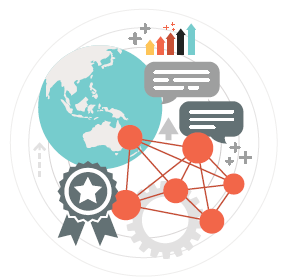
The upgraded code base will replace the ALA’s species occurrence record ingestion systems and will be released soon (late June-July 2021).
Most of the work is happening behind the scenes, so hopefully you won’t notice any significant changes to your everyday use of the ALA. If you do see anything out of the ordinary please let us know on support@ala.org.au
This is just the first stage of our three stage Core Infrastructure Upgrade Project.
The Core Infrastructure Upgrade Project – our focus for 2020-22
The Core Infrastructure Upgrade Project is a major project on our ALA Work Plan 2020-21 and will continue into the coming year.
The project team has rewritten various components of the ALA species occurrence record ingestion system and it now shares a common code base with the Global Biodiversity Information Facility – GBIF – plus some adjustments for the ALA’s specific requirements.
The new infrastructure will be fit-for-purpose, more maintainable and able to adapt to our future needs as Australia’s national biodiversity data infrastructure. These improvements will enable the ALA to manage increases in data volume and different types of data.
The upgrade will also mean we’re better positioned to handle data load automation. Our data partners will be empowered to control the currency and quality of their data.
Why are we upgrading ALA’s core infrastructure?
After 10 years of active development, the ALA’s core data processing infrastructure is approaching ‘end of life’. The Core Infrastructure Upgrade Project will enable the ALA to adapt to changing data and user requirements heading into our next decade of operation.
Getting ready for more data and more complex data
We are already seeing large volumes of new generation occurrence records coming from automated observations such as camera trapping, bioacoustics, animal tracking, and genetics including eDNA. Our current infrastructure is at capacity accommodating our occurrence record volume of just under 100m records. We need to be able to handle much larger data volumes.
GBIF already manages 1.7 billion occurrence records and sees exponential year-on-year growth. By collaborating with GBIF, we greatly benefit from their experience with large data volumes.
The new infrastructure will also enable us to join GBIF in adopting newer data types and other TDWG (Biodiversity Information Standards) extensions. It will open up opportunities to collaborate on new initiatives with GBIF’s development team and the international biodiversity data community.
Partnering with GBIF and the international Living Atlases
Throughout the Core Infrastructure Upgrade Project, we’ve been working closely with GBIF and collaborating on a shared codebase. We’re also communicating with our user and stakeholder communities and the international Living Atlases community.
The Living Atlases is an international community of 26 biodiversity data infrastructures originally built on the ALA code base. It is a vibrant development community, sharing and contributing to a common code base. Most of the Living Atlas instances are nodes of GBIF and as such are stakeholders in the future of the infrastructure upgrade work. Throughout the project, the GBIF and ALA development teams have been keeping the Living Atlases community up-to-date and abreast of the changes.
For more information
- Email us at support@ala.org.au
- Check out our Core Infrastructure Upgrade Project page